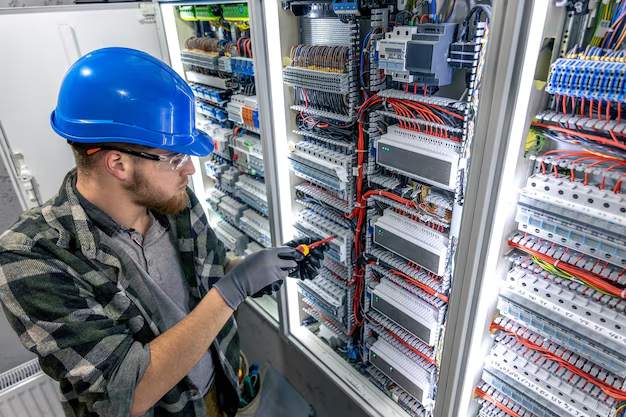Finding the Right Circuit Breaker Size for Your Refrigerator: A Complete Guide
When it comes to setting up your kitchen or upgrading your refrigerator, one critical aspect that is often overlooked is determining the right size breaker for your refrigerator. Proper electrical setup ensures your appliances function safely and effectively, free from interruptions. If you've ever wondered whether your kitchen setup is safe or how to choose the right breaker for your fridge, this guide is for you.
Understanding Breakers and Their Importance
Before we delve into selecting the ideal breaker size, it's essential to understand what a circuit breaker does. Circuit breakers are critical components in electrical systems. They are designed to protect circuits from overload by interrupting the flow of electricity if a fault is detected. The primary function of a circuit breaker is safety — it prevents electrical fires by cutting off power when appliances draw more current than the wiring can safely handle.
How Breakers Work
Circuit breakers automatically switch off electrical flow to protect the circuit from damage caused by excess current due to overloads or short circuits. When electrical currents exceed the breaker's capacity, it triggers the breaker to trip and stop the current, potentially preventing damage.
The Consequence of Incorrect Breaker Size
Using the right breaker size is crucial for safety and efficiency. An undersized breaker can trip frequently, causing inconvenience and wear on the breaker and appliances. Conversely, an oversized breaker may fail to protect appliances, which could lead to electrical fires.
The Basics of Electrical Requirements
When it's time to choose a breaker size for your refrigerator, it involves a fundamental understanding of the appliance's electrical requirements.
Power and Current Ratings
- Power: Refrigerators are typically marked in terms of watts or kilowatts (kW). This figure indicates the amount of power the appliance consumes.
- Current: Expressed in amperes (amps), this measures the rate of electrical flow.
Standard Electrical Specifications
Most household refrigerators rely on a dedicated 120-volt circuit. However, checking the manufacturer's specifications is key to knowing the precise requirements for your specific refrigerator model.
Determining Your Refrigerator's Requirements
- Nameplate Information: The refrigerator's nameplate will generally provide the necessary electrical information, such as voltage and current (amps).
- Owner's Manual: This document is a reliable resource for precise electrical details and recommendations.
Selecting the Right Breaker Size
The proper breaker size is determined by the refrigerator's amp requirement. Here's how you can calculate and select the appropriate breaker:
Steps to Calculate Ideal Breaker Size
Identify Amp Requirements: Locate the amp requirement from the nameplate or manual. Typically, modern fridges draw between 3 to 6 amps but can surge higher momentarily during startup.
Apply the 125% Rule: A general guideline is to choose a breaker size that is 125% of the continuous load. This accounts for occasional surges without tripping the breaker unnecessarily.
- Example: If your refrigerator operates at 6 amps, multiply by 1.25 to accommodate safe operation under surge: [ 6, ext{amps} imes 1.25 = 7.5, ext{amps} ]
Round Up to Nearest Standard Breaker Size: Round up to the nearest standard breaker size, typically 10 or 15 amps.
Common Breaker Sizes for Refrigerators
For most household refrigerators, a 15-amp breaker is usually standard. Larger or commercial models may require a 20-amp breaker.
Additional Considerations for Breaker Installation
When selecting a breaker, other factors should be taken into account:
Dedicated Circuits for Refrigerators
- Dedicated vs. Shared Circuits: Refrigerators ideally should be on a dedicated circuit to minimize the risk of overloads. Sharing circuits with other high-demand appliances can lead to frequent tripping.
Local Electrical Codes
- Compliance: Always ensure your installation complies with local electrical codes. This can prevent potential hazards and ensure insurance coverage is maintained.
Common FAQs and Troubleshooting Tips
To further empower you in dealing with potential issues, here are some frequently asked questions and solutions:
FAQ 1: Why Does My Breaker Keep Tripping?
- Overload Warning: If your breaker trips, it may be due to overload. Reduce the number of appliances on the circuit or upgrade to a dedicated line.
- Check Appliance: Sometimes, it can be a fault with the refrigerator such as a short-circuited motor or capacitor.
FAQ 2: Is It Safe to Use Extension Cords?
- Warning Against Extensions: Avoid using extension cords for refrigerators; they can contribute to overload and fire risks. Instead, ensure the refrigerator's cord reaches the outlet directly.
FAQ 3: Should I Replace My Own Breaker?
- Safety First: While technically feasible, it is safer and often mandated by code to hire a licensed electrician for breaker installations and replacements.
Summary Section: Key Takeaways 📌
- Assess Electrical Needs: Check the refrigerator's power and amp requirements.
- Use 125% Rule: For calculating breaker size, apply the rule to account for startup surges.
- Choose Standard Sizes: Typically, 15 amps suffices for most fridges.
- Prioritize Safety: Engage professional help for installations; never compromise on local code compliance.
- Avoid Overloads: Use dedicated circuits for fridges, and avoid extension cords.
Final Insight
Making sure you have the correct breaker size for your refrigerator isn't just about compliance; it's about safeguarding your home and appliances. By understanding the power requirements and ensuring your electrical setup is robust enough to handle surges, you can enjoy peace of mind and uninterrupted service from your kitchen's essential appliances. Remember, when in doubt, consult with an electrician who can guide you according to your specific needs and local regulations.
